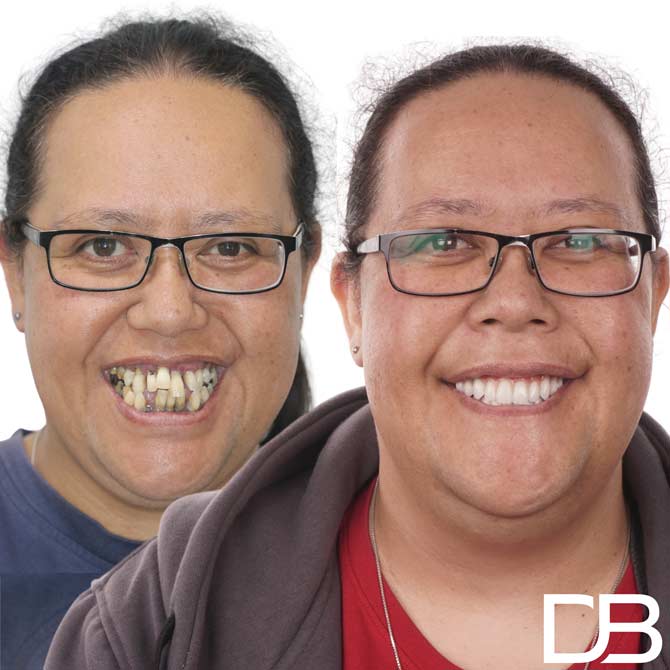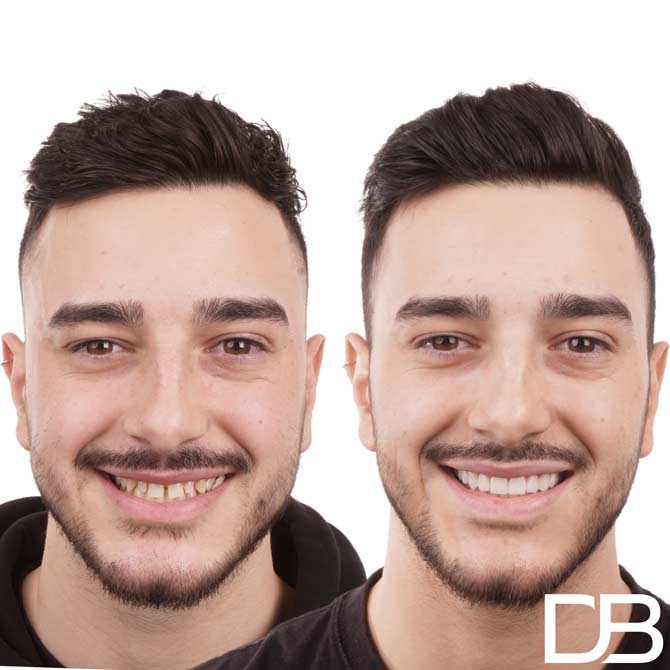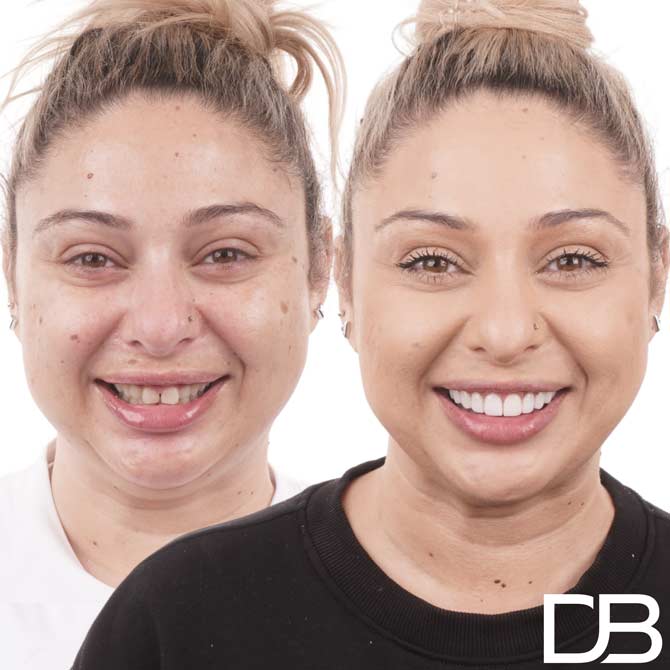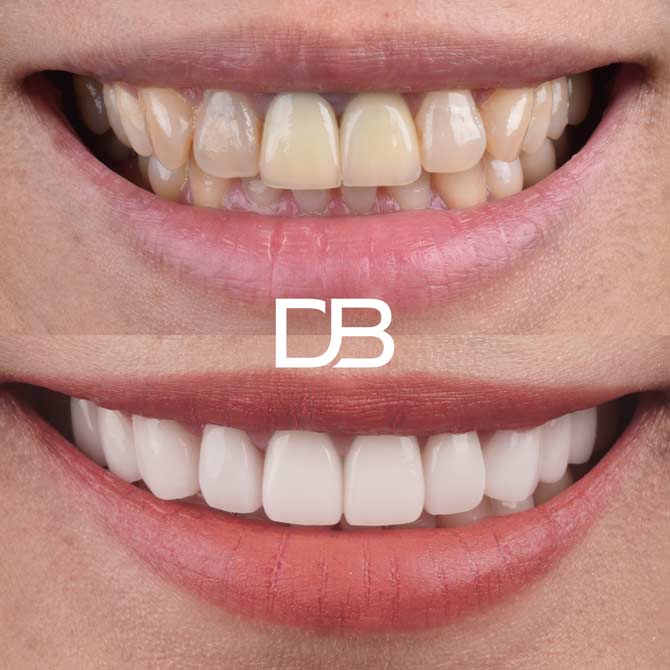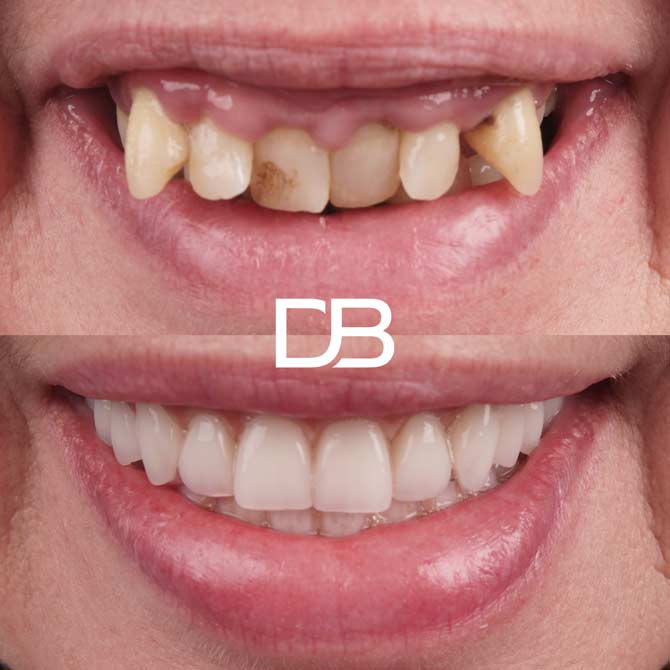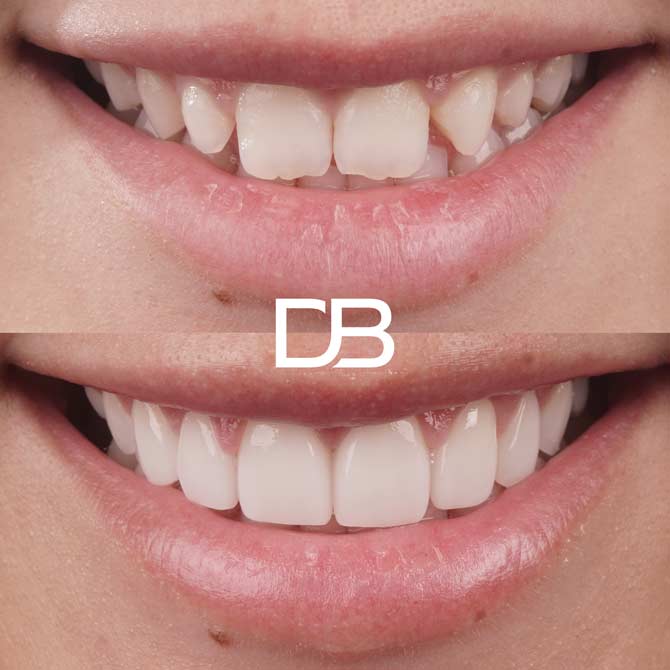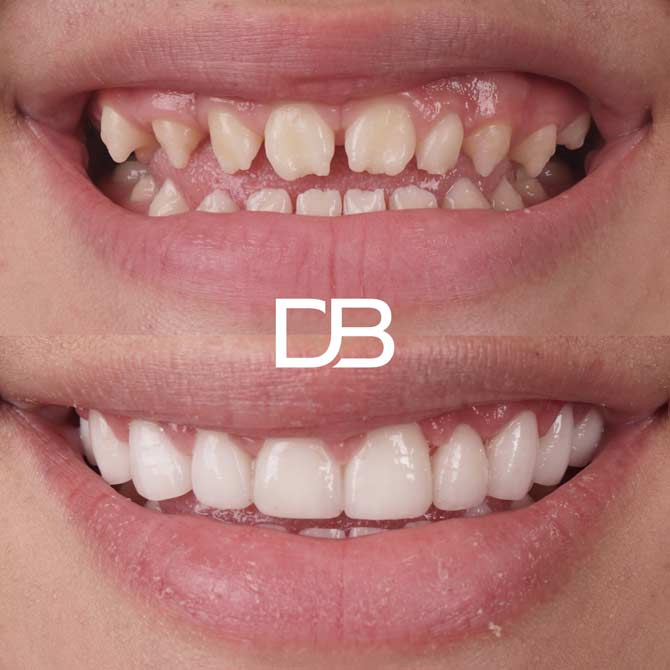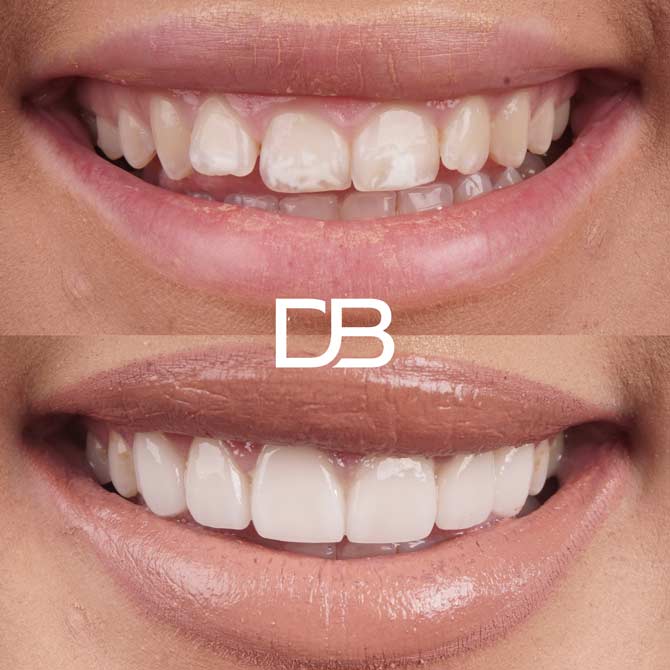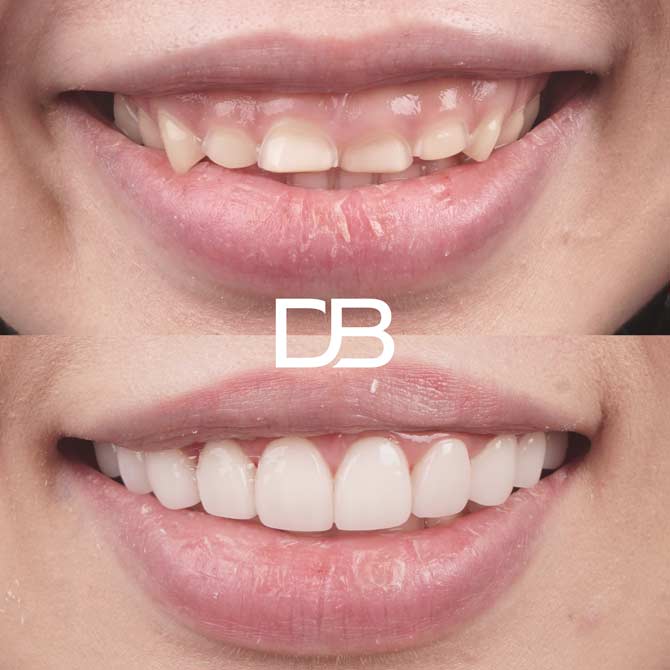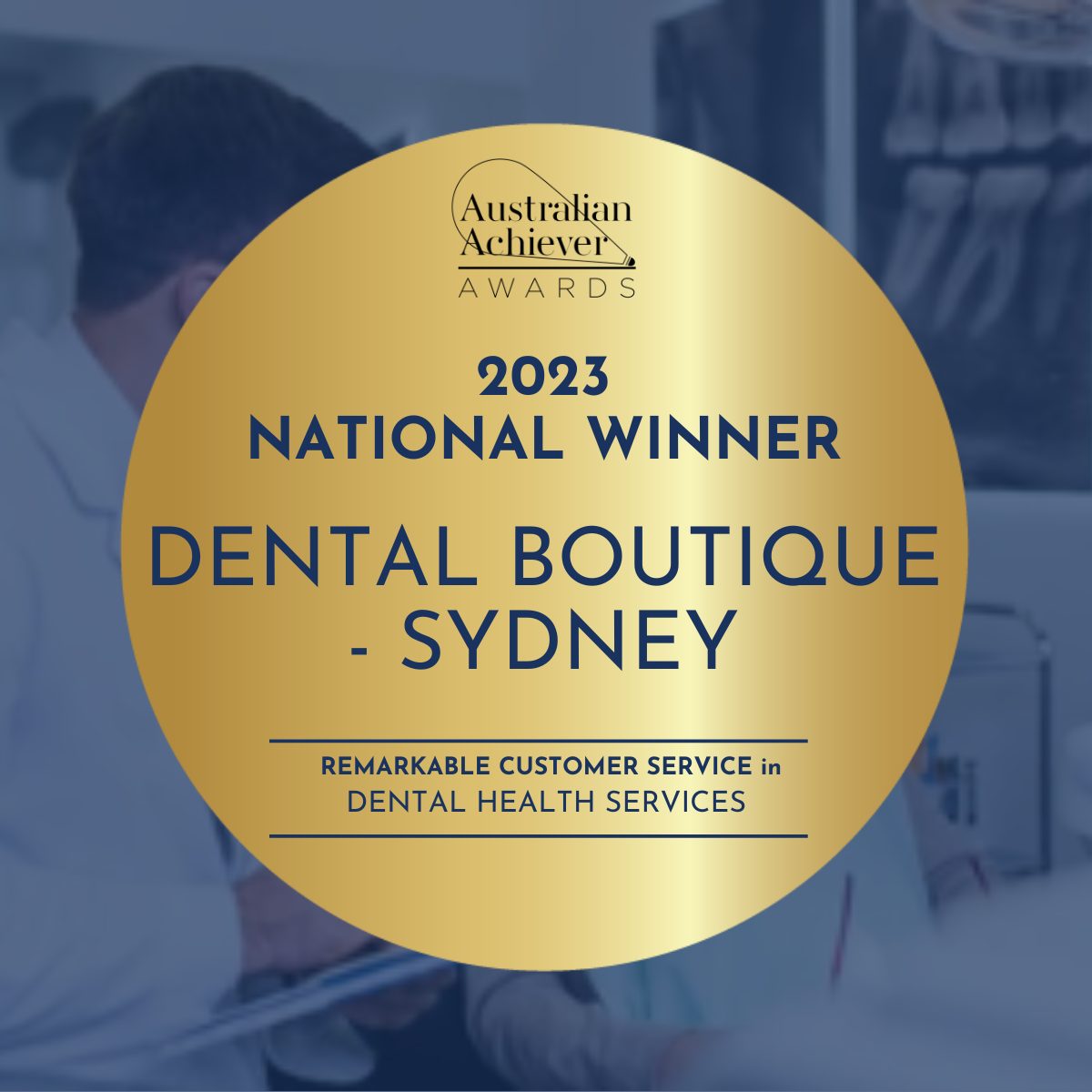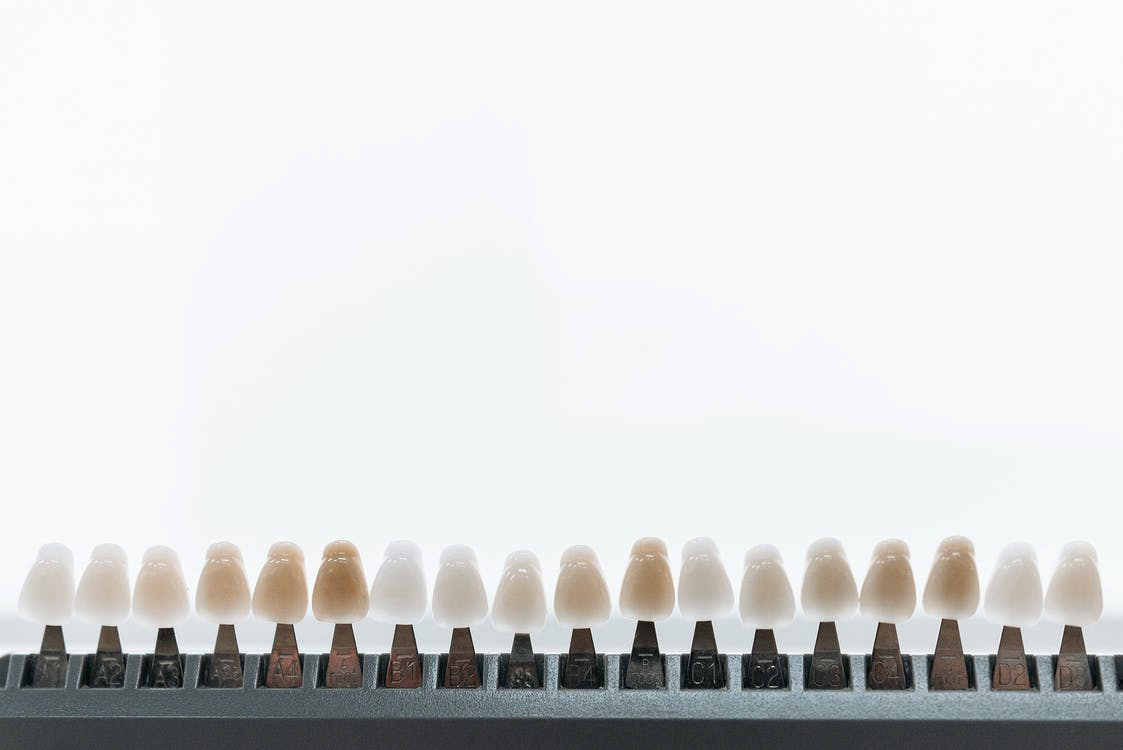
Damaged, missing, or decaying teeth can have significant impacts on your health and confidence. Luckily, modern dentistry offers a number of effective solutions to repair damaged teeth, and one of the most popular options is veneers. There’s no need to endure pain, functionality impairments, and self-esteem issues as a result of dental concerns. You may be wondering, can you get veneers with periodontal disease? To be effective, veneers require a healthy gum foundation. So, you cannot get veneers if you’re currently suffering from periodontal disease. However, you can get veneers once your gums have been treated and healed. Read on for a closer look at how to prepare your gums for veneers.
What Are Veneers?
Veneers are a restorative treatment designed to improve the look, feel, and function of your smile. They are shell-like coverings that are permanently bonded over the front surface of the teeth. Veneers are made from either porcelain or composite resin. At Dental Boutique, we use our very own brand of porcelain veneers, VeneerMeâ„¢.
Veneers can be placed on as many teeth as you’d like. For the most natural look, we generally recommend at least 4 to 8 veneers. Many patients choose to have veneers on the upper teeth only, however, depending on your smile, you can have veneers placed on the bottom teeth as well.
To prepare your teeth for veneers, your dentist may need to file down or grind down your teeth so that the porcelain caps can be neatly placed over the original tooth.

The Benefits Of Veneers
They can improve your smile if you have discoloured, cracked, damaged, or misaligned teeth, and restore the functionality of your teeth by realigning your bite. If you have cracked or weakened teeth, veneers will also help to stabilise the tooth and eliminate the need for a complete tooth replacement.
If discolouration is your primary tooth concern, porcelain veneers may be the right option for you. Porcelain is a stain-resistant material, so unlike composite veneers, porcelain veneers deliver a permanently white smile.
Porcelain veneers usually last at least 5 to 15 years before they need to be replaced. If they’re properly cared for and you avoid habits that cause chipping, such as biting your nails or chewing ice, they can last even longer.
What Is Periodontal Disease?
There are two forms of gum disease; gingivitis, which is milder in presentation, and periodontal disease, which is much more severe.
Periodontal disease is a serious infection that damages the gum tissue, and when left untreated, can result in bone damage. It can also cause tooth loosening and tooth loss.
The main symptoms of periodontal disease are:
- Swollen gums
- Red or purple gums
- Tender gums
- Gums that bleed regularly
- Bad breath
- Pus between gums
- Pain
- Tooth loss
- Receding gums
- New gaps between teeth
Periodontal disease is most commonly caused by poor oral hygiene. Inadequate oral care leads to a build-up of hardened plaque, which eventually results in gingivitis. If the gingivitis isn’t addressed, it can progress into periodontal disease.
Risk factors for periodontal disease include smoking, recreational drug use, obesity, weakened immune systems, hormonal changes, and certain medical conditions such as diabetes and Chrone’s disease.
Can You Get Veneers With Periodontal Disease?
So, can you get veneers with bad gums? Unfortunately, you cannot get veneers if you’re currently suffering from periodontal disease. Veneers require a stable foundation to be effective. In other words, healthy gums are a requirement for veneer treatments. But the good news is that once your gum disease is treated and healed, you will be eligible for veneers.
Treating Periodontal Disease Before You Get Veneers

If you have periodontal disease, you’ll need to discuss treatment options with your dentist. They will be able to determine the severity of your infection and will decide whether you require surgical or non-surgical treatment.
Depending on your situation, your treatment plan may include:
Non-Surgical Interventions
- Scaling removes bacteria, plaque, and tartar from the teeth and gums.
- Root planing smooths the surface of the tooth roots to prevent plaque from building up again. It also removes the bacteria that causes gums to become inflamed and detached from the tooth surface.
- Antibiotics may be required to curb the infection. They will usually come in the form of an antibiotic mouth rinse or a gel that is inserted into gums after you brush your teeth. You may also need heavier-duty oral antibiotics.
Surgical Treatments
- Pocket reduction. Your dentist will make an incision into the gum so that the gum tissue can be lifted back, allowing better access to the roots for scaling and planing. If bone loss is an issue, the bone may be recontoured as well.
- Soft tissue grafting. If any soft tissue is damaged or if your gums have receded, your dentist may need to remove a small amount of tissue from the roof of your mouth and attach it to the affected site.
- Bone grafting. The bone graft may be made up of fragments of the original bone or from a donor’s bone. The bone graft helps to keep your teeth in place and allows for the regeneration of new healthy bone.
- Guided tissue regeneration. During this surgery, your dentist puts a piece of special fabric between your bone and the teeth. This stops tissue from coming into contact with the healing area, so that your bone can grow back properly.
Tissue-stimulating proteins. Your dentist may apply gel to the diseased tooth root to prompt bone growth.
Veneers For Gum Concerns
So, veneers are extremely effective in correcting aesthetic and functional tooth concerns, but what can veneers do for your gums?
Can Veneers Fix Gum Recession?
Wondering if you can have veneers with receding gums? Porcelain veneers can help problems related to gum recession, but they cannot treat the gum recession itself. Receding gums may first need to be treated with gum grafting, which involves rebuilding the gumline using soft tissue grafts or artificial tissue.
When gum receding occurs, the roots of your teeth may be exposed. This often causes sensitivity and pain. Porcelain veneers can actually help to cover the exposed tooth roots, therefore reducing the sensitivity and discomfort associated with receding gums.
Gummy Smiles And Veneers
A gummy smile can occur for a number of reasons. You may have excess gum, your teeth may be disproportionate in size and shape, or your top lip may lift up excessively when you smile.
Gum contouring is a service that can help to rework gummy smiles. Your dentist will remove and reshape gum tissue in small sections to reveal more of the tooth and create a more proportionate gum-to-tooth ratio.
Gum contouring and veneers go somewhat hand-in-hand. You can combine gum contouring or a gum lift with veneers in order to decrease the amount of gum showing and create a longer tooth shape.
Key Points To Remember
Porcelain veneers are used to repair smiles affected by damaged, discoloured, chipped, or misaligned teeth. They are relatively long-lasting and can improve the look, feel, and function of your smile and bite. They can also help to improve issues associated with receding gums and gummy smiles.
You need healthy gums to be eligible for veneers,, so you cannot get veneers with periodontal disease. Periodontal disease is a severe form of gum disease that can result in pain, swelling, and tooth and bone loss. However, you can receive veneers once your gum disease has been treated using either surgical or non-surgical interventions.
Have a question about your options or ready to book an appointment? We’d love to hear from you. You can get in touch with us today.


